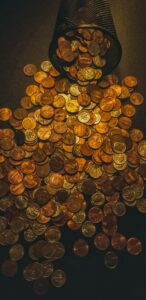Carbon Capital Forex vs. Traditional Forex Trading: Which Is Better?
Forex trading has become increasingly popular over the years, attracting investors from all walks of life. With its potential for high returns and the ability to trade 24 hours a day, it’s no wonder that people are drawn to this market. However, there are various approaches to forex trading, and one of the most debated topics is the comparison between carbon capital forex and traditional forex trading. In this article, we will delve into the differences between these two approaches and explore which one might be better suited for different types of traders.
Traditional forex trading refers to the practice of buying and selling currency pairs through a broker. Traders rely on technical and fundamental analysis to make trading decisions and execute trades manually. This approach requires a significant amount of time and effort, as traders need to constantly monitor the market and react quickly to changes in price movements.
On the other hand, carbon capital forex is a relatively new concept that leverages artificial intelligence and machine learning algorithms to automate trading decisions. This technology-driven approach aims to remove human emotions and biases from trading, allowing for a more systematic and disciplined approach. Carbon capital forex systems analyze vast amounts of historical data and market patterns to identify potential trading opportunities and execute trades automatically.
One of the main advantages of carbon capital forex is its ability to eliminate emotional trading. Human emotions such as fear and greed can often cloud judgment and lead to poor trading decisions. By relying on algorithms, carbon capital forex systems can execute trades based on predefined rules and strategies, removing the emotional element from the equation. This can lead to more consistent and objective trading results.
Another benefit of carbon capital forex is its ability to process large amounts of data and identify trading patterns that may be difficult for human traders to spot. These systems can analyze multiple currency pairs simultaneously and make split-second decisions based on real-time market conditions. This can result in faster execution and potentially more profitable trades.
However, it’s important to note that carbon capital forex is not without its drawbacks. One of the main concerns is the reliance on technology and the potential for system failures or glitches. While advancements in technology have made carbon capital forex systems more robust, there is always a risk of technical issues that could lead to missed trading opportunities or even losses. Traders using carbon capital forex should have contingency plans in place to mitigate these risks.
Traditional forex trading, on the other hand, offers a more hands-on approach that allows traders to exercise their judgment and intuition. This approach can be appealing to those who enjoy the thrill of making trading decisions and believe in their ability to read the market. Traditional forex traders also have the flexibility to adapt their strategies based on changing market conditions, which may not be possible with carbon capital forex systems.
Furthermore, traditional forex trading allows for more customization and personalization. Traders can develop their own trading strategies and adjust their risk tolerance according to their individual preferences. This level of control may be particularly important for experienced traders who have honed their skills and developed a deep understanding of the forex market.
In conclusion, the choice between carbon capital forex and traditional forex trading ultimately depends on the individual trader’s preferences and goals. Carbon capital forex offers the potential for automated and emotion-free trading, with the ability to process vast amounts of data and identify trading patterns. Traditional forex trading, on the other hand, allows for more customization and a hands-on approach. Both approaches have their pros and cons, and traders should carefully consider their own trading style and objectives before making a decision.






